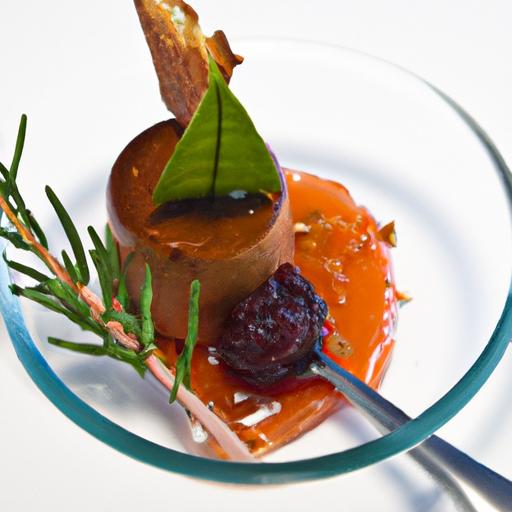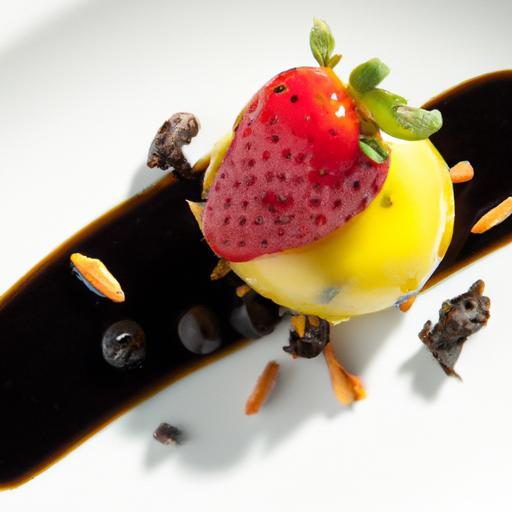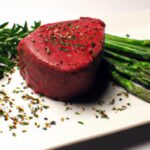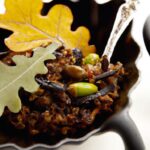In the world of flavor, there is a transformative process that turns simple sugar into a golden symphony of taste and aroma-caramelization. More than just a cooking technique, caramelization is a delicate dance of chemistry and creativity, where heat coaxes raw sweetness into complex notes of toffee, butterscotch, and burnt sugar bliss. Unlocking the sweet science behind this art reveals not only the magic that enriches desserts and savory dishes alike but also the precision and patience it demands. Join us as we delve into the caramelized realm, exploring the alchemy that turns sugar into an irresistible sensory experience.
Unlocking Sweet Science: The Art and Magic of Caramelization
Unlocking sweet science reveals how the transformative power of caramelization not only enhances flavor but elevates every dish it touches. This process, where sugars break down under heat to create deep amber hues and complex aromas, opens a world of culinary creativity. Whether you dream of crafting the perfect golden caramel sauce, creating a nutty crust for your roasted vegetables, or unveiling rich butterscotch undertones in desserts, mastering caramelization is essential for any passionate cook eager to impress and delight.
Prep and Cook Time
- Preparation: 5 minutes
- Cooking: 10-15 minutes
Yield
- Servings: Approximately 1 cup of caramel (enough for 6-8 servings depending on use)
Difficulty Level
- Medium – Requires attentive temperature control and timing, but attainable with practice
Ingredients
- 1 cup granulated sugar
- 1/4 cup water
- 1/2 cup heavy cream, warmed
- 2 tablespoons unsalted butter, room temperature
- 1/2 teaspoon kosher salt (optional, for salted caramel)
- 1 teaspoon pure vanilla extract
Instructions
- Begin by combining the granulated sugar and water in a medium heavy-bottomed saucepan over medium heat. Stir gently just until sugar dissolves, then stop stirring to allow natural crystallization control.
- Watch closely as the sugar mixture heats; it will first bubble then gradually turn from clear to a pale golden amber. This is your chemistry in action-the caramelization process unfolding.
- Adjust heat carefully if the sugar darkens too fast; you want a deep golden hue that signals nutty, rich flavor without burning. This typically happens around 320°F (160°C).
- Remove saucepan from heat and slowly pour in the warm heavy cream while whisking vigorously. The mixture will bubble strongly; this reaction smooths and enriches the caramel.
- Add the butter and salt while the caramel is still warm, whisking until fully incorporated. The butter adds luscious silkiness, while salt intensifies flavor depth.
- Stir in vanilla extract last, infusing the caramel with a subtle floral aroma that balances the buttery richness beautifully.
- Allow caramel to cool slightly before using. Store any leftovers in an airtight container in the refrigerator for up to two weeks-reheat gently before serving.
Chef’s Notes: Mastering Temperature & Flavor Exploration
- Temperature control is your secret weapon: Use a candy thermometer for precision. Too low-your caramel will be pale and lack depth; too high-expect bitterness from burnt sugar.
- Explore flavor profiles: Let the sugar darken a bit longer for a butterscotch-like delight or stop sooner for a lighter, sweet, and floral note.
- For savory dishes, try caramelizing onions or garlic slowly to draw out natural sugars and create complex, umami-rich bases.
- Substitutions: Coconut cream adds a tropical twist with dairy-free richness; brown sugar or honey alter the flavor subtly but deliciously.
- Troubleshooting: If your caramel crystallizes (turns grainy), start fresh and avoid stirring once dissolved sugar begins boiling.
Serving Suggestions
- Drizzle warm caramel over freshly baked apple crumble, garnished with crushed toasted pecans to enhance the nutty layers.
- Use as a sauce for panna cotta or ice cream, topped with flaky sea salt and a sprig of fresh mint for contrast.
- Brush a thin layer over roasted root vegetables like carrots or sweet potatoes to develop a sweet-tangy crust.
- In cocktails, add caramel syrup to whiskey or dark rum mingled with cinnamon for a warming treat.
| Nutritional Information (per 2 Tbsp) | Amount |
|---|---|
| Calories | 110 |
| Protein | 0.3 g |
| Carbohydrates | 15 g |
| Fat | 5 g |
Learn more sugar candy techniques for expanding your sweet science skills.
For scientific insights into sugar caramelization, visit Chemistry World.

Q&A
Q&A: Unlocking Sweet Science: The Art and Magic of Caramelization
Q1: What exactly is caramelization?
A1: Caramelization is nature’s sugary symphony-a complex chemical process where sugars, heated beyond their melting point, break down and transform into golden-brown, flavorful compounds. It’s the alchemy behind the deep amber hues and rich flavors in candies, desserts, and even roasted vegetables.
Q2: How does caramelization differ from Maillard reaction?
A2: While both processes contribute to browning and flavor development, caramelization involves the direct thermal decomposition of sugars, whereas the Maillard reaction is a dance between amino acids and reducing sugars. Caramelization yields sweet, nutty, and sometimes slightly bitter notes, while Maillard brings savory, roasted aromas.
Q3: Which types of sugars caramelize best?
A3: Simple sugars like sucrose, fructose, and glucose each caramelize differently. Sucrose, or table sugar, is the classic candidate for caramelizing, melting and browning evenly, while fructose caramelizes at lower temperatures and can produce more intense flavors and colors. The type of sugar defines the sweetness, color depth, and complexity of the final caramel.
Q4: What temperatures are crucial in caramelization?
A4: Caramelization begins around 320°F (160°C) and intensifies as the temperature rises to about 350°F (175°C). At these heat levels, sugars melt, break apart, and reorganize into flavorful byproducts, giving caramel its signature taste and texture. Too hot, and it burns; too cool, and it stays bland and pale.
Q5: Can caramelization be controlled to create different textures?
A5: Absolutely! By tinkering with temperature and timing, caramelization can yield anything from soft, chewy taffy to crisp, brittle shards. Stirring and adding liquids like cream or butter can also influence viscosity and smoothness, turning a scientific reaction into edible art.
Q6: Why does caramel sometimes taste bitter?
A6: As caramelization progresses, sugars break down further, producing bittersweet compounds and sometimes burnt notes. This bitterness adds complexity and depth, preventing the flavor from being cloyingly sweet, much like the way roasted coffee beans balance richness with a hint of bitter charm.
Q7: How is caramelization used beyond desserts?
A7: Caramelization graces savory dishes too. It lends sweetness and color to roasted root vegetables, enriches sauces like balsamic reductions, and even appears in the crust of seared meats. This versatility makes caramelization a secret weapon in both sweet and savory kitchens.
Q8: What magic tips should home cooks know about caramelization?
A8: Patience is key-low and steady heat helps avoid burning. Use a heavy-bottomed pan for even heat distribution. Watch closely; caramelization can swing from perfect to charred in seconds. And don’t fear experimentation-every batch teaches new secrets, unlocking the sweet science in your own kitchen.
To Conclude
As we close this flavorful journey into the world of caramelization, it’s clear that what unfolds in the pan is nothing short of alchemy-a dance of heat and time transforming simple sugars into golden treasures. The art and magic of caramelization unlock layers of complexity, enriching dishes with deep, nuanced sweetness and a bouquet of enticing aromas. Whether you’re a curious home cook or a seasoned chef, embracing this transformative process elevates your culinary creations from ordinary to extraordinary. So next time you watch sugar melt and turn amber, remember: you’re not just cooking-you’re orchestrating a symphony of science and flavor, one luscious caramel note at a time.


